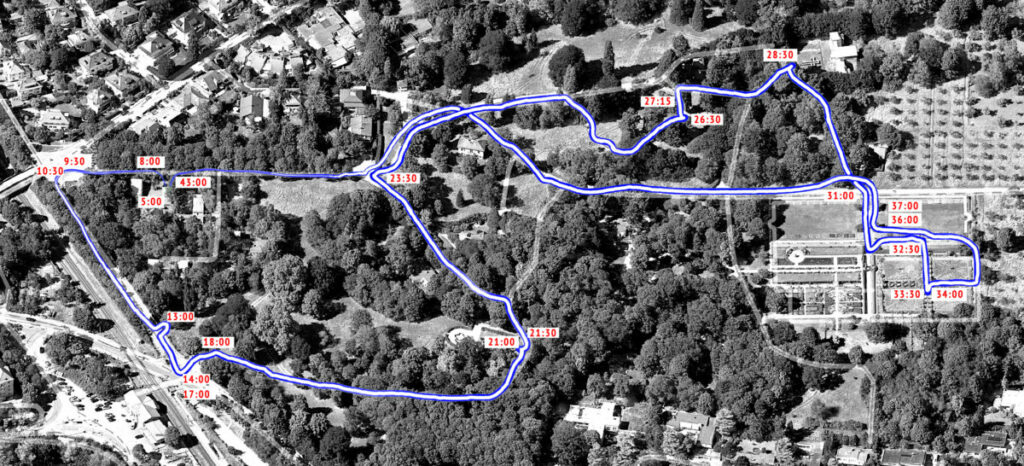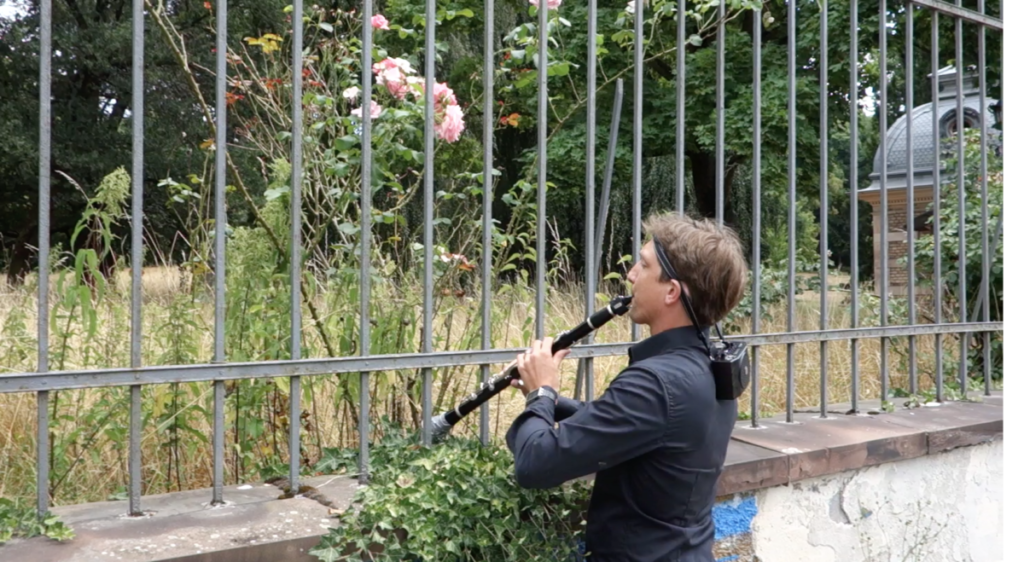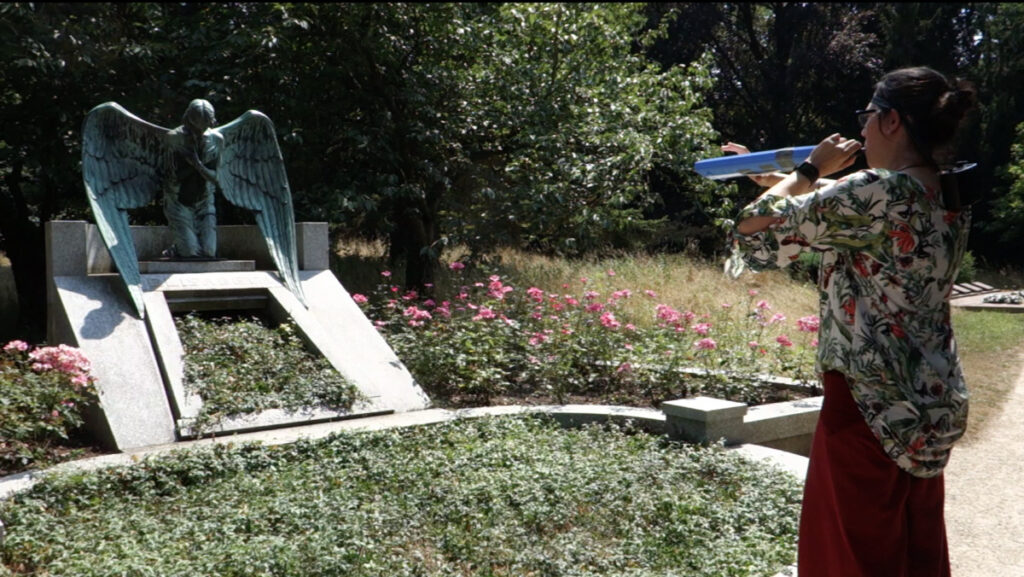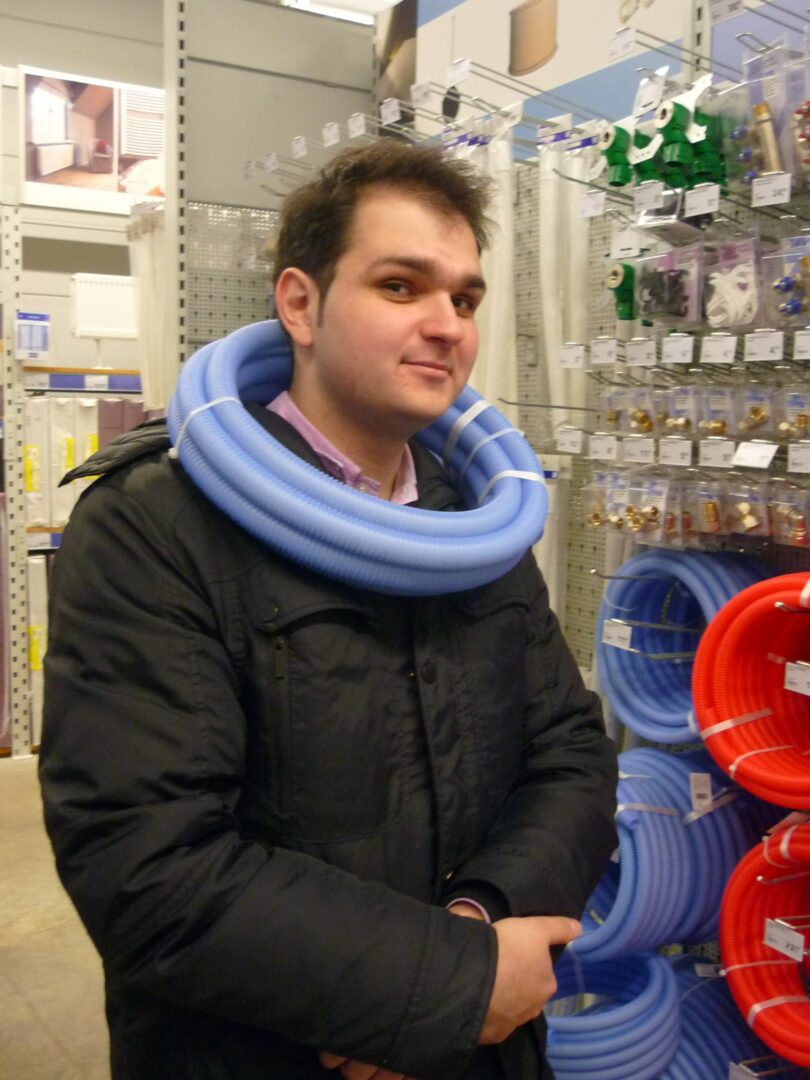“Rose Height. Apollo” is a spatial composition performed by 12 musicians. The name of the place Rosenhöhe (Rose Height, Darmstadt, Germany) gives the title for the piece. In 2018, they invited me to the Nadar ensemble residence there. The unusual composer’s exploration of familiar spaces was a subtheme of the project. Rosenhöhe is a vast rose garden. The park has a lot of signs and cultural symbols. You can’t see the form of tombs built in a cross model from the ground. There are fountains with double arches, where a sunlight corridor happens. There are religious places (minaret) and artistic residences. If we leave the park, we find ourselves in a transport hub — a road and a functioning railway. We can hear many birds depending on the time of day. An airplane path passes over the park. We can hear it about once every five minutes.

This detailed description allows us to feel the actual acoustic material used in the piece. For example, there is a schedule for an incoming train. We can calculate that at such-and-such a moment a train will arrive, the barrier with an electronic sound will close, and we will hear the train’s arrival and its beep. Then, before his arrival, I can arrange it as a non-exist action, the ‘phantom’ train. I need to reproduce the sound of the train using speakers near the station. This substitution, when performed correctly, is not detectable by listeners. Such sound mirages happen in the performance constantly. The portable speakers of ten performers reproduce the birds’ sounds recorded at the park.
Imagine that you are in a forest where there are a lot of sounds around you: birds, insects, tree leaves sound. At some point, all sounds mutate. Birds and insects become electronic sound, and foliage becomes electronic noise. There is the basis for splitting, creating a quite parallel reality.

Performers with speakers hide from the audience and sometimes find themselves very close to them. During the piece, performers move the sound of speakers relative to the listeners. Further, I am interweaving not only the birds recorded in this park into the sound environment. The birds from other places appear in the columns (birds recorded in Moscow, Vienna, Brussels, and Antwerp). Now the area is a kind of portal somewhere else, to something different. It works the same with all the other sounds of Rose Hills park. The sounds of gates opening, through which spectators pass, the rustling leaves, the airplanes — all are pre-recorded and in the speakers. At some point, the recorded sounds play much more often than in acoustic. All this is an excellent basis for hallucinations and mirages. We can say that reality thickens.

Two soloists with the melodica and clarinet lead listeners on two separate paths. By answering and improvising what they hear, they adapt it to an artificial sound environment. Here we remember about hidden musicians with speakers. The two soloists can react to the sounds they hear. To imitate them on their instruments, and thus weave them into our perception or not notice it to hide them from us. The audience hears the environment through the actions of two musicians and perceives everything through their perception. Musicians can ‘amplify’ some sounds (for example, if the soloist repeats the trill after the bird) or doesn’t notice them (the soloist can drown out some event with his sound).

